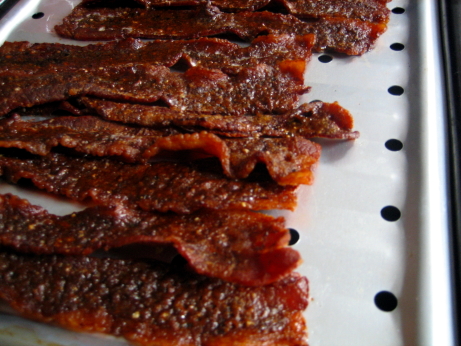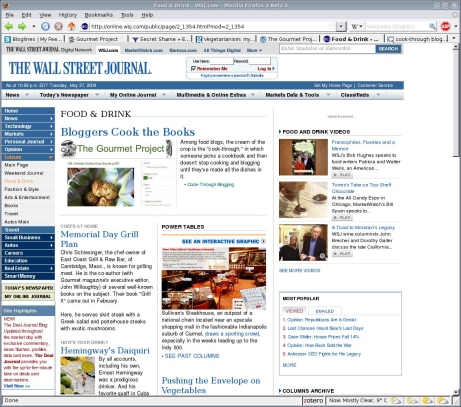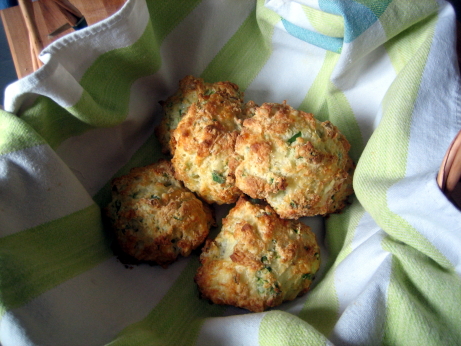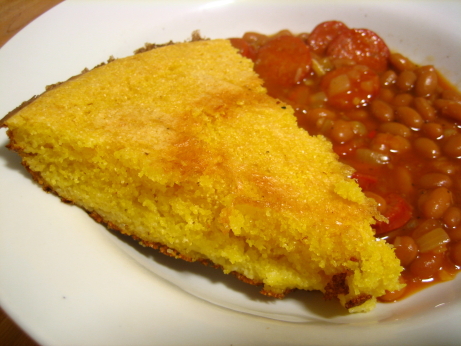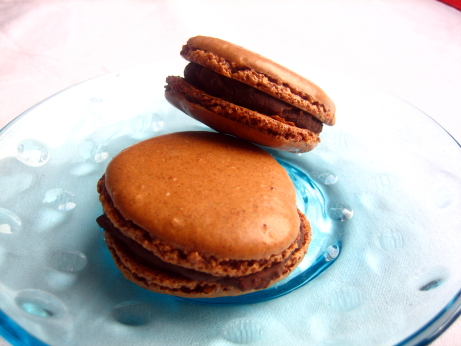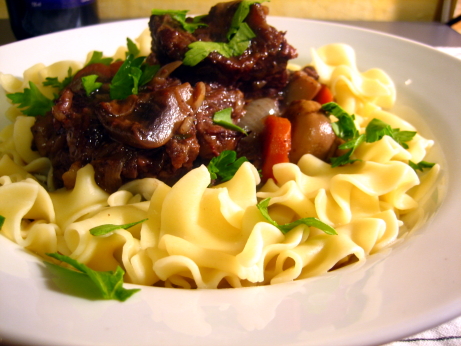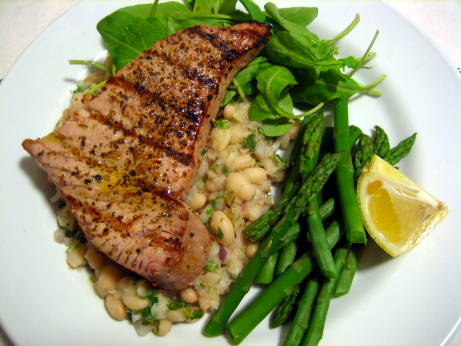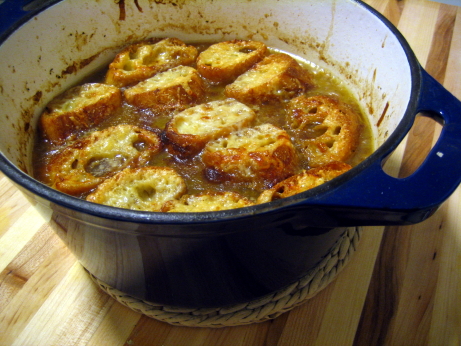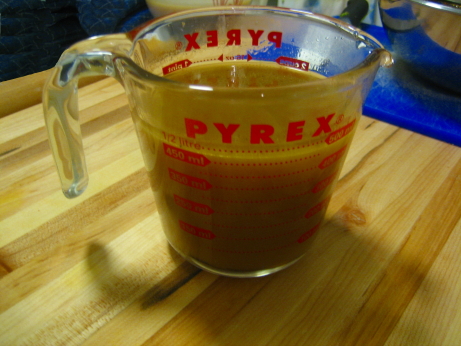
The recipe
I can’t escape the conclusion that I’m a food snob. I take satisfaction in looking down on packaged and processed foods, and I give people points for making meals from scratch, double points if the ingredients come from an ethically superior source, and triple points if they grew the food themselves. The ultimate ridiculousness of snobbishness is that no one can live up to the standards they judge others by. I enjoy pickling my insides with Doritos, I pay outrageous prices for a tiny package of hummus that I could make at home for twelve cents, and I don’t find that organic vegetables taste better than their fertilizer drenched cousins. My ultimate sin though, is that I don’t make my own stock.
Stock making and apartment living aren’t an obvious combination. Making stock takes most of a day, so you’ll want to make up a big batch. That’s well and good if you’ve got a spare freezer in the basement, but our tiny freezer is spilling over with leftover ravioli, pesto ice cubes, and pork tenderloin that went on a crazy sale. There’s just no room for three liters of stock. The food network has filled hundreds of hours by having famous chefs repeat the refrain that the biggest reason the professionals’ food tastes better than home cooks’ is that they make their own stock (and use unconscionable amounts of butter). The sin that will get me kicked out of the food snobs annual picnic is that I don’t think that store bought broth is all that bad, in fact I like it. It’s convenient, perfectly servicable, and unless you’re using it as a gigantic component of your dish no one is going to be able to tell the difference. You usually have to reduce the salt in the rest of the recipe, because even “low sodium” broth isn’t all that low in sodium, other than that store bought broth is perfectly fine, and not at all a pain in the ass.
Making this stock was a pain in the ass. It’s not actually difficult, but it’s messy and takes six and a half hours. Your day starts with a trip to the butcher, who is happy to provide meaty beef and veal shanks, but thinks you’re an idiot when you ask him to saw them into one inch slices. He’s been making stock his whole life, and doesn’t think this step is necessary. He’s old and Italian, so he’s probably right. You then bike home with a plastic bag full of chopped up bones hanging from your handlebar, and dump them into a roasting pan along with some carrots and onions. Roast this mess, stirring occasionally for an hour at 450. Stop cursing Ruth Reichls name, because the house is starting to smell pretty good. Make a bouquet garni by tying parsley, thyme, and a bay leaf in cheesecloth. Start cursing Ruth again, because you’re going to be running the stock through a fine mesh sieve later on, and a bouquet garni is totally unnecessary. Transfer the roasted bones to a stockpot. In transferring them drop several meaty bones on the floor, this is interesting for the cat, but annoying for you. Deglaze the roasting pan, and transfer the scraped up brown bits to the stockpot along with celery, the bouquet garni, and water. Bring it to a boil, and spend half an hour skimming the nasty meat froth that rises to the surface. Disgust your girlfriend by sneaking up on her with the meat foam while she tries to read the paper. Let the stock reduce for 3 to 5 hours. Don’t leave the house, because that’s a fire hazard. Break up the monotony by skimming more foam every once in a while. Once you’ve got 8 cups of liquid left, fish out all the bits of bone and mushy vegetables, and get rid of them. Then try to set up a sieve over another big pot, and pour the stock through the sieve. Mess this up, and have the sieve fall into the filtered stock. Do it all again. Touch the hot stockpot and burn yourself. Swear for a while. Do a side to side comparison of your stock to Campbell’s low sodium beef broth, and realize that they’re really not that different. Swear some more.
This tastes like tetra-packed beef broth from the store, only it takes a long time. Homemade does have more gelatin in it, so it has a richer mouth feel, but I’m sure blooming an eighth of a teaspoon of gelatin in store bough broth would nullify this difference. Final verdict, totally not worth it. I used it as the basis for French Onion Soup, which specifically calls for making this stock, and suggests that it won’t be nearly the same with store bought, but frankly the stock wasn’t amazing in the soup. Maybe there are beef stock recipes out there that will blow the cheap, readily available, and very convenient competition away, but this is not one of them.
